I’ll admit that all three of my dogs have been quite intrigued by cats!
Ok, that’s the understatement of the century. Chasing cats trumped just about everything else until I started to incorporate several specific measures, which brings us to today’s topic of how to STOP your dog from chasing cats.
Although it might seem funny and evoke images of Tom & Jerry where the Bulldog chases Tom the cat, it tends to be stressful for cats in real life.
This post contains Amazon affiliate links. As an Amazon associate, That Mutt earns money from qualifying purchases.
Stopping your dog from chasing cats essentially boils down to two different approaches.
The first one tackles the problem at its root, before it even occurs. That’s the preventative part. The second one lists a variety of options that solve the problem once it’s actively happening.
Let’s start with the easy one, the preventative method!
Preventative methods to stop your dog from chasing cats
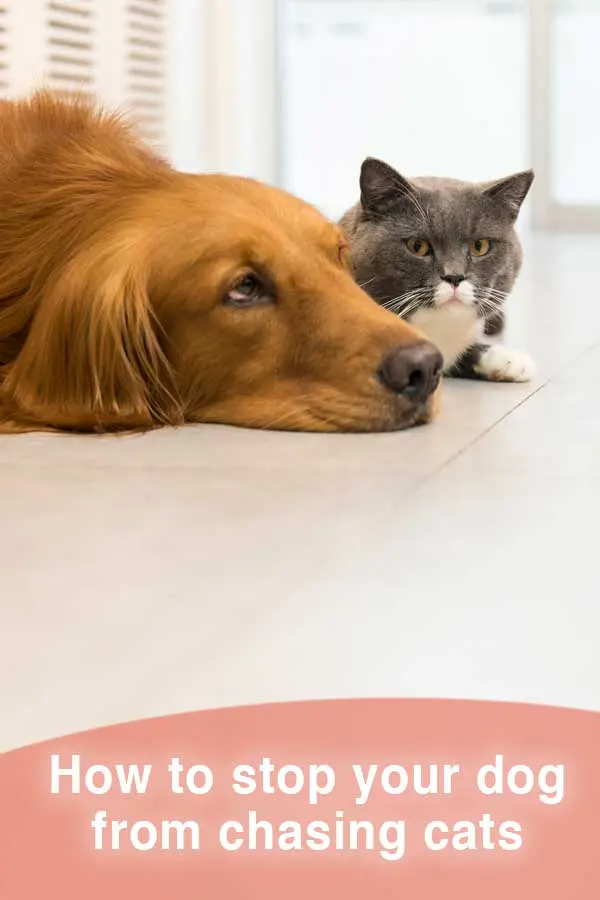
Yes, cats and dogs can get along!
The easiest way to achieve this peaceful cohabitation is to introduce your puppy to your kitten early on for proper socialization. That’s the ideal case scenario, but introducing older cats to puppies is also effective.
That’s because dogs are the ones who can ultimately do more harm to a cat than the other way around, so taking that factor out of the equation from the get-go is huge.
I’ve been in a number of households in my capacity as a professional pet sitter where dogs and cats lived together under the same roof and got along just fine.
In most cases, the dogs got introduced to the resident cat when they were puppies. They learned that cats are a normal part of every day life, and that a cat’s claws are nothing to be messed around with!
That was certainly the case with Bulldog puppy Chester and resident cat Sherman. Chester only tried to roughhouse with Sherman a few times. He quickly learned his lesson after Sherman’s claws put him in his place. They never play together, but they’ve been respectful of one another ever since.
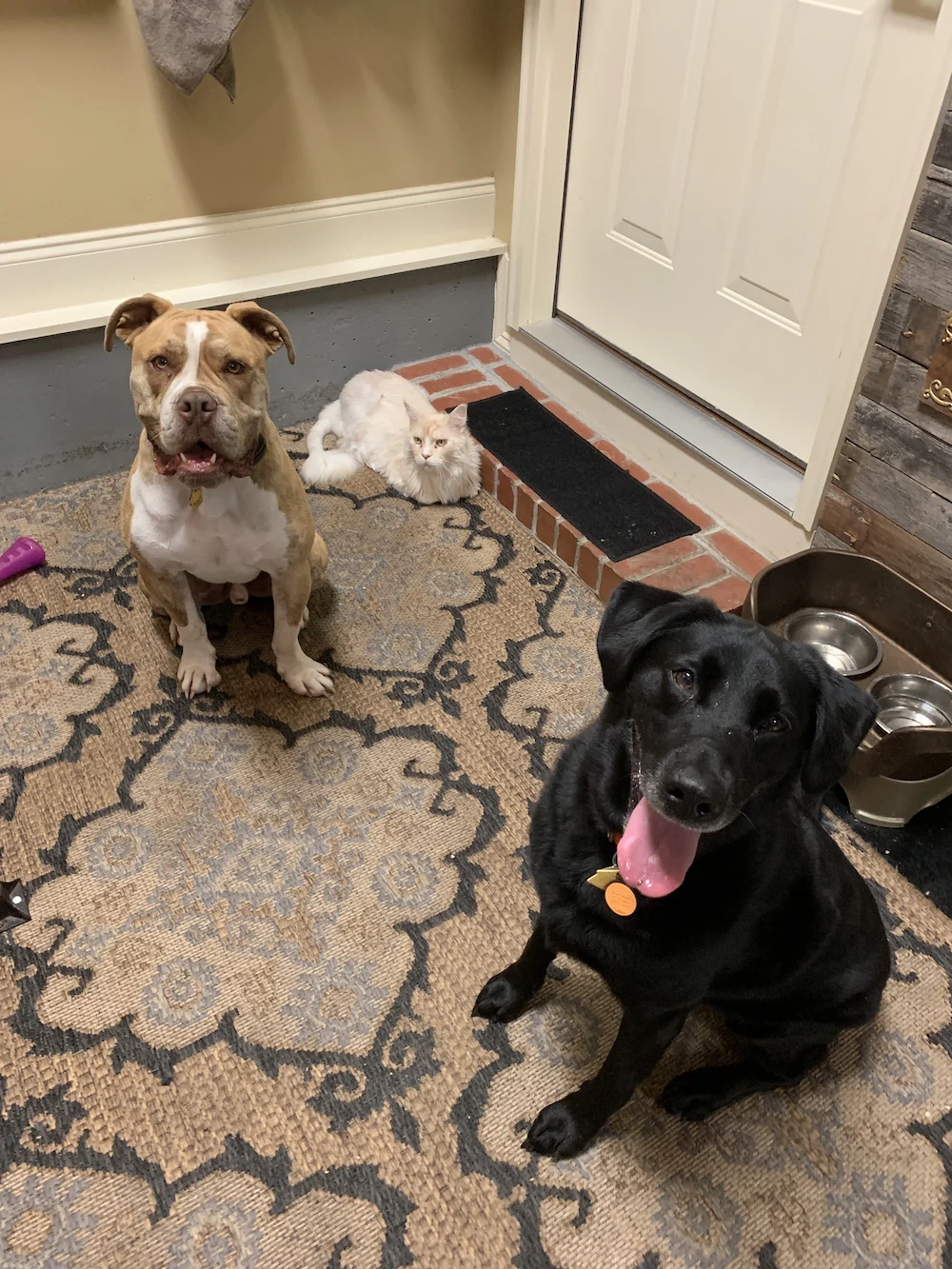
2. Understanding your dog’s prey drive
A dog’s prey drive is a normal part of his genetic makeup, but it’s more active in some dogs than others. The prey drive is what kicks in when a dog sees other animals move quickly, especially smaller ones like cats, rabbits or squirrels, and entices them to chase after them.
A dog who’s about to start chasing his prey might do some or all of the following:
- Stalk the prey
- Keep his eyes fixated on the prey
- Crouch down low to the ground
- Very slowly move closer to the prey
- His body will appear stiff right before he starts the chase
Note that some dogs may only want to chase after the cat in play. Other dogs may not be trying to hurt the cat originally but in the middle of the excitement the dog could become aggressive. And then there are some dogs that definitely do have the intention to catch and harm the cat.
3. Train your dog to focus on you instead of the cat
Start working with your dog in a low-key environment such as the living room in your home.
Leash your dog if necessary and use the help of a family member or friend to teach your dog to focus on you. Every time your dog checks in with you, i.e. looks at you rather than at the other human you’ve enlisted to help, reward him with a high-value training treat.
Once your pup has mastered that concept, step up the game by using favorite toys. You can still keep your dog on a leash, then place the toy nearby and ask your dog to look at you rather than at the toy.
You can say a command like “watch me.” Whenever he does just that, reward with a treat. If you’re using a dog training clicker, click it as soon as he looks at you to mark the desired behavior, then treat.
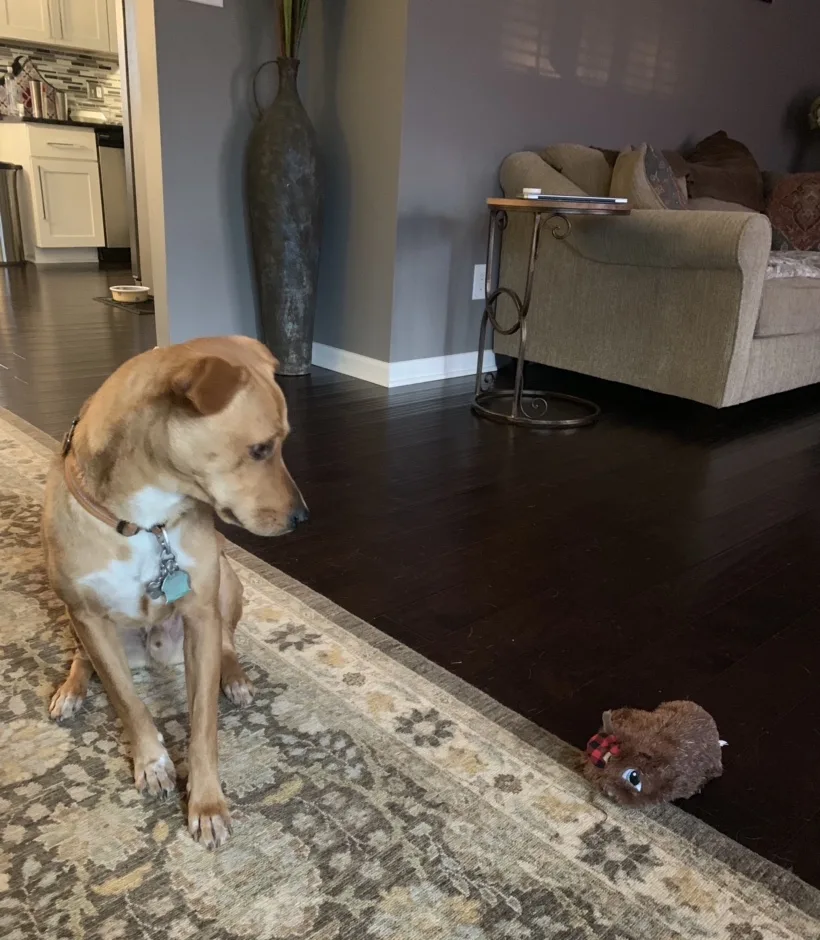
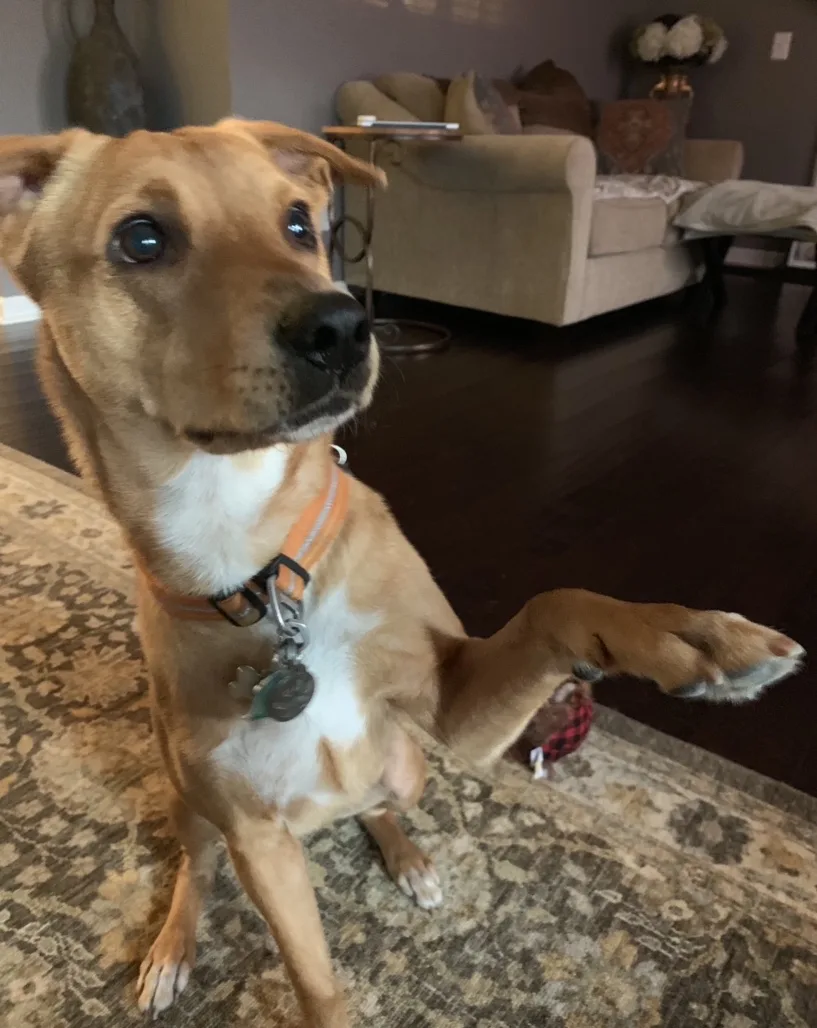
Now take it one step further by tossing the toy a few feet away from your dog, still keeping him on a leash if necessary. As soon as he looks at you rather than at the toy, (click the training clicker and) reward with a treat.
Step it up a notch by tossing the toy across the room and rewarding your dog for checking in with you.
This is a great way of teaching your dog impulse control and checking in with you rather than giving in to a game of chase.
Remember to practice daily for the best results, but to keep training sessions short. 3-5 daily training sessions lasting up to 5 minutes each will go a long way and keep your dog interested in working with you.
Different options to help solve the problem of dogs chasing cats
If your dog wasn’t properly socialized to cats as a puppy, you can still curb his enthusiasm for chasing cats by using a few hacks both inside your home as well as outside:
Barriers – crates, gates & leashes
We highly recommend you use crates and gates to create boundaries. Carlson Pet Products has several high-quality options, and they have sent several products to Lindsay and Remy to try at no cost.
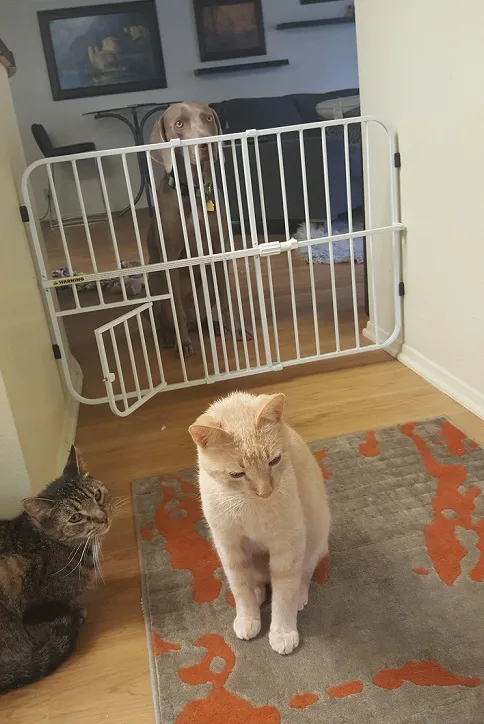
- Supervise at all times when the dog is not crated (at first)
- Keep your new dog leashed in the house at first
- Gate off an area of your home with an extra tall baby gate that has a small cat door your dog doesn’t fit through
- Create additional cat escape routes such as elevated cat walks on walls using floating shelves
- When you can’t supervise, keep your cat in a dedicated, safe cat room that your dog doesn’t have access to
- Crate your dog when you’re not home or leave in a separate room.
- Have your dog wear a long leash inside your home before transitioning to off-leash
Training & other tools
- Teach basic commands to increase impulse control around the cat such as leave it, sit, down and stay
- Exercise your dog thoroughly on a daily basis to avoid pent-up energy that he might redirect to a cat chase
- Give your dog a high-value, long-lasting and distracting chew such as a bully stick or a filled KONG toy (freezing it makes it last even longer)

Adding a new dog to an established dog/cat household
You may already have a cat and a dog who get along just fine. If you’re thinking about adding another dog to your pack who’s no longer in his puppy stage, your resident dog might very well be able to teach your new pup a thing or two about respecting the cat.
That’s because dogs tend to copy the behavior of other dogs they’re around frequently.
However, if your new dog shows overly aggressive behavior to your resident cat, have him wear a muzzle while training him to be polite around your cat. You can read more about how to use a muzzle in That Mutt’s article How to get your dog used to a muzzle.
Also consider consulting with a professional dog trainer/animal behaviorist for hands-on advice for very tough cases.
I’m not a huge fan of rehoming pets, but finding a cat-free forever home for your determined cat-chasing dog might be the best solution for everyone in some cases. Or possibly re-homing your cat.
That’s particularly true if your cat is extremely stressed out by your new dog’s relentless chasing attempts and you’ve exhausted all options including the help of a professional trainer or behaviorist.
Signs of stress in a cat can be:
- Decreased appetite
- Eliminating outside the litter box
- Diarrhea
- Excessive scratching and grooming
- Hiding
- Aggression towards their humans
Also remember that sometimes it does take a couple of months for everyone to get along, and some dogs may always need to be supervised around a cat. See our post, Can dogs and cats get along?
What to do on a walk when your dog sees a cat he wants to chase
Even dogs who live and get along with cats in the home will likely want to chase a stray cat they spot outside.
The most important piece of advice I can offer you is to stay calm and collected when you’re out on a walk and your dog sees a cat in motion.
The worst reaction is to scream or yell at your dog combined with pulling on the leash! That will only increase the sense of excitement your dog already feels.
Instead, try using some of the tools I’ve listed below. They’ve helped me master the cat challenge over the years:
- Change directions or walk on the other side of the street.
- Carry high-value training treats on you to distract your dog from the cat and reward him for focusing on you instead.
- Use a training collar such as a head collar, martingale collar or prong collar to help you correct and redirect your dog. Familiarize yourself with how to use each collar properly prior to using it. Each dog is different.
- Consider adding a backpack to your dog’s walks. It’ll help keep him focused on you and his “work” rather than his prey drive.
- Also see our post on introducing your dog to your barn cat
All of my dogs have walked with backpacks on a regular basis. While they didn’t keep them from noticing cats who were in motion, they contributed massively to walking past them in a more relaxed manner.
That’s because it made them focus on the job of carrying weight. Their training collars helped me redirect them away from any cats we came across, and I used the training treats to reward the pups for staying somewhat calm and paying attention to me.
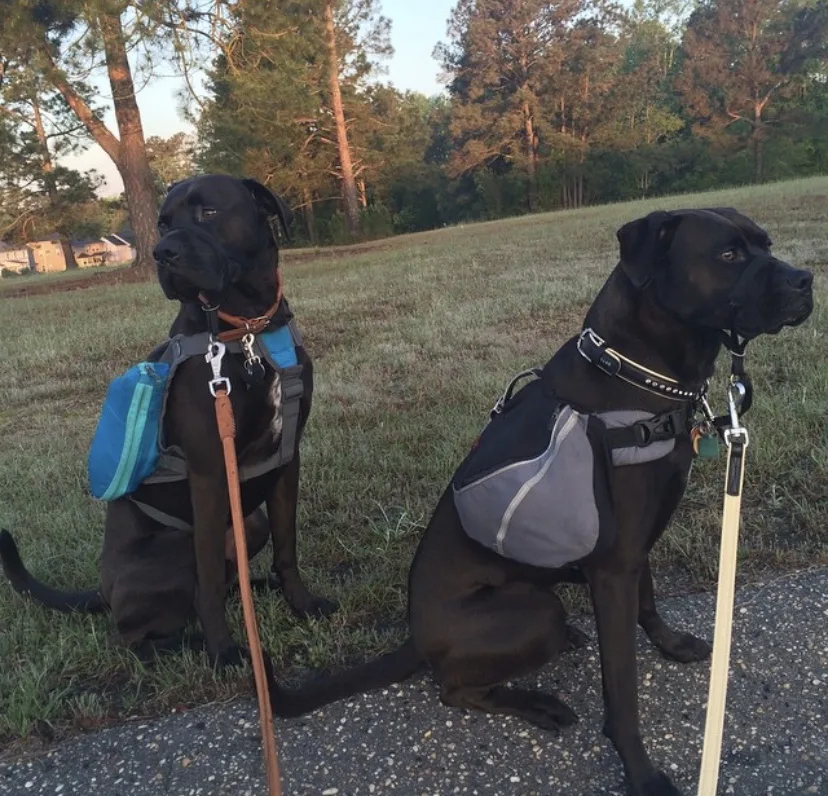
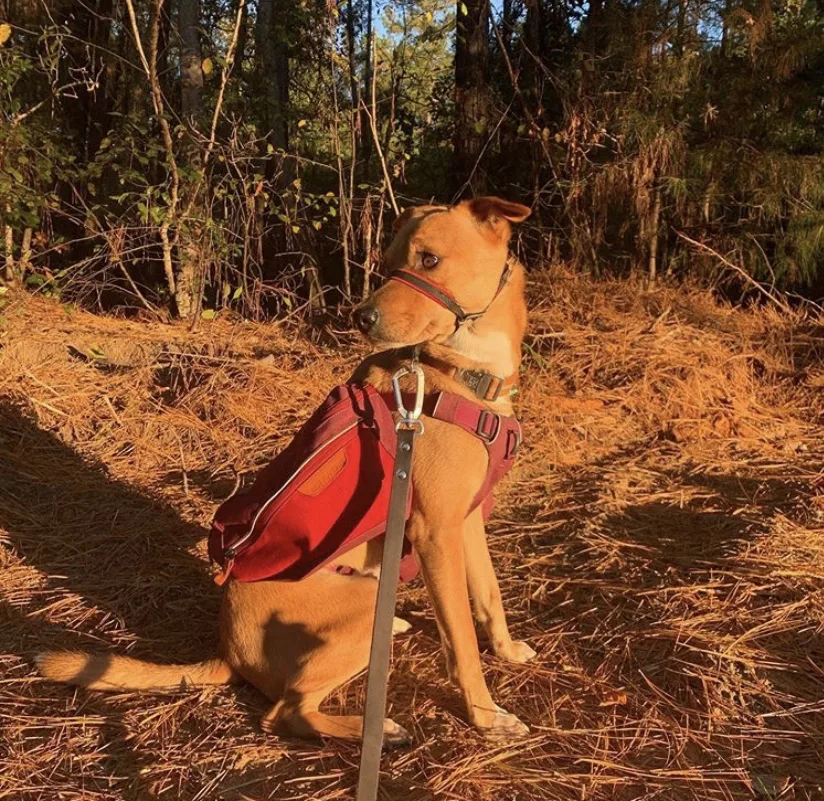
Using an e-collar to stop your dog from chasing the cat
I do not have experience using an e-collar to prevent a dog from chasing a cat, so Lindsay is adding this info:
Hi, Lindsay here! We are getting a second weimaraner in January! She is 2 years old with a high prey drive (she’s trained for hunting birds) and she has not lived around cats.
My current weim Remy (pictured below) grew up with two cats, so that might help us out a bit. However I am not taking any risks. (See our post: Do weimaraners get along with cats?)
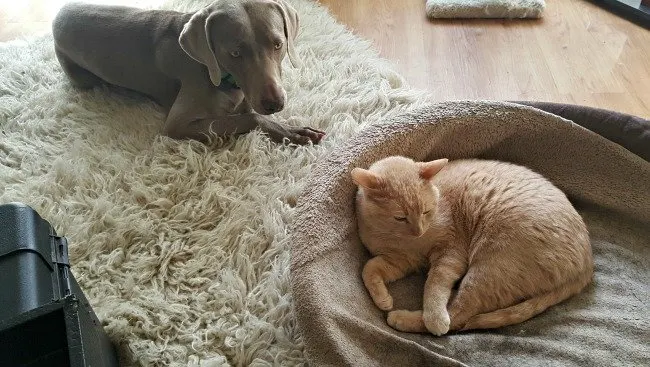
New pup “Raven” will be on a leash at all times at first, and we will be following all of the advice Barbara listed above, using crates, gates, and working on impulse control, etc. We will take the intro to our cat very slowly.
If I feel it is necessary, I plan to use our e-collar with a remote and will give a hard correction if Raven fixates or tries to go after our cat. I’m hoping this won’t be necessary and that we’ll see success using treats and calm praise for good behavior. However, I’m also realistic about an adult hunting breed and won’t take any chances. I’ll definitely post an update on how it goes. Wish us luck!
Now we’d like to hear from you!
Now it’s your turn! Which one of these approaches are you going to implement to stop your dog from chasing cats? Do you have any additional advice?
If you have any questions, let us know in the comments!
That Mutt is a participant in Amazon’s affiliate advertising program. As an Amazon Associate, That Mutt earns money from qualifying purchases.
Barbara Rivers writes regularly for That Mutt. She is certified in raw dog food nutrition from Dogs Naturally Magazine and the author of three ebooks about balanced raw dog food. She is a blogger at K9s Over Coffee.

Marilyn
Monday 14th of August 2023
I am elderly with COPD. Usually my dog walks great. But at night if she has to go out she is on high alert. I have a martingale but it didn't help the other night. She almost took me out and got away anyway. Luckily, she stopped and I got her. But it wasn't good for me or my breathing and I was really upset with her. What should I do?
Aisling
Tuesday 14th of January 2020
I have a bit of an issue with this. I live in a suburb of Dublin in Ireland. So its not a farm and I live in quite a built up housing area on a very busy road. My issue is my dog has a huge prey drive (being a terrier) and while I don't entirely agree that cats should be allowed roam the streets, they do and that's something as a dog owner I have to put up with everyday. When I leave my house and am still within my housing estate, its not a peaceful walk for me or my dog. Its high energy and built up tension with my dog not even taking a pee because she is so focused on finding cats. Once I get out of the estate, she is fine! However, this leads to me getting frustrated and my dog, who hasn't the best heart, to be in a constant state of high alert which causes stress to her. That cat who is sitting on the wall staring at my dog going apesh*t couldn't care in the slightest and I can assure you, is not stressed at all. The first point you talked about here was prevention. In my situation, (which I understand is not the same for a lot of people and not the main point of the article) is that the prevention would be me keeping the dog on a lead (which I do) and for cat owners to possibly keep their cats indoors or not in an area where dogs are frequently walking by. Living with a cat and teaching a dog not to chase is one thing. Teaching a dog who has had no real exposure to cats and who has about 20 cats roaming the streets in the estate is a whole other ball game! Great article regardless! Rant over! :)
Donna
Sunday 6th of June 2021
@Aisling, you have just about described my exact cat problem with my large mixed breed 16mth old dog. constantly scanning for cats and immediately lunging and trying to chase (always on lead) but I’m scared she will pull me over and get away. How have you worked and overcome this daily challenge?
Lindsay Stordahl
Tuesday 14th of January 2020
Oh gosh, yeah that sounds frustrating! Totally different situation. Kind of like when dogs are obsessed with birds or squirrels.
KL
Friday 20th of December 2019
We have 2 cats and a dog, cats were in the household first. The dog has a good “leave it” command, and we’ve branched that off to a specific, “Leave the kitty.” She’s really just curious, but the cats don’t always appreciate even friendly interest from a large German Shepherd, so years of training and continued use of pet gates (especially so the litter boxes are safe spaces!) have been our friends.
One mistake I made was enthusiastic praise for a “good leave the kitty!” My praise-motivated young dog proceeded to appropriately greet and then leave the cat alone 5 consecutive times in about 60 seconds. The cat was not on board with being a pawn in the dog’s quest for praise parties. I might have done better to offer a calmer marker.
Lindsay Stordahl
Friday 20th of December 2019
Thank you, that is helpful! I think it helps so much when the dogs enter the home as puppies vs. adult.
Miss Maggie
Wednesday 18th of December 2019
Every time my miniature poodle even looks at a cat or squirrel when we're on a walk I use the command "Leave it". She knows that means ignore whatever you are investigating. Hopefully someday it will sink in.
Teresita
Tuesday 17th of December 2019
I am so happy to have found "That Mutt". I strongly believe in training sessions and not the yelling by the neighbor and the crying by the puppy when he leaves the puppy alone in the house. Blanca is going on 3 months and has done her share of giving Ceci, the 5 year old cat, a run for her money. So this article is just in time. Thank you so much. It shows how much you love these animals, too.
Lindsay Stordahl
Tuesday 17th of December 2019
Good luck and so glad to help!